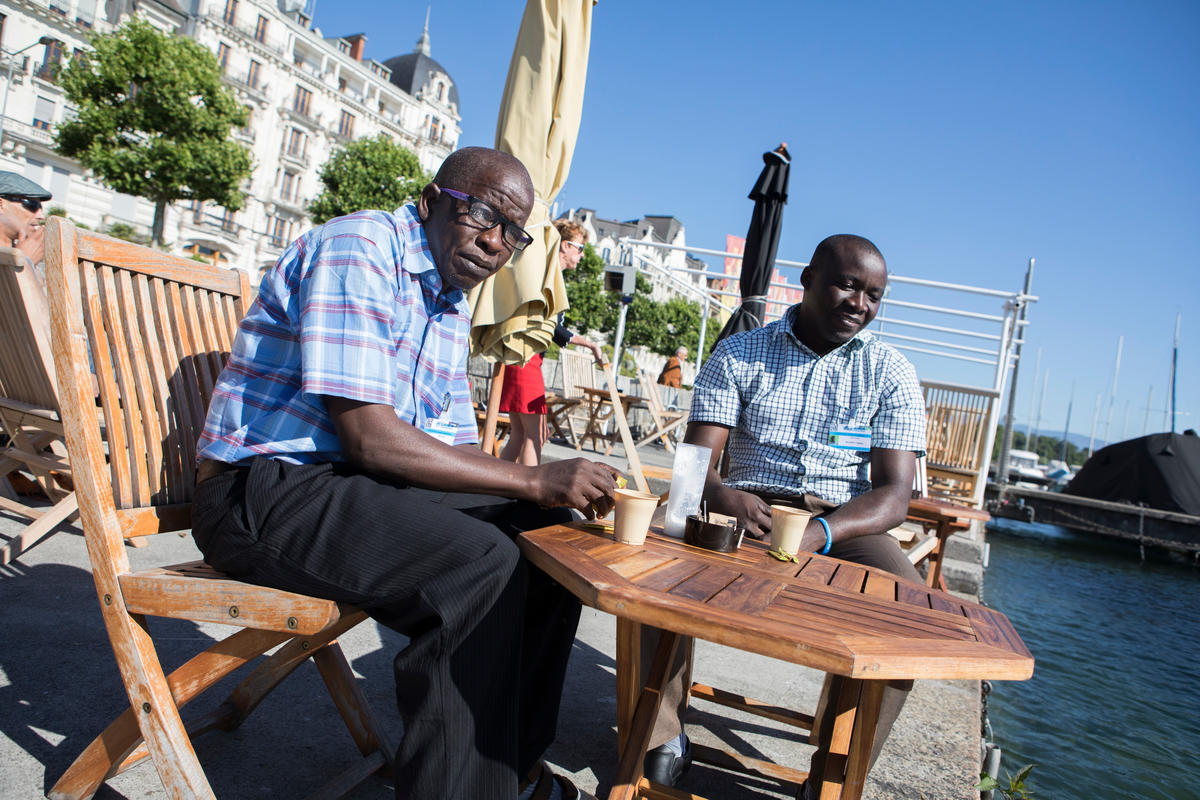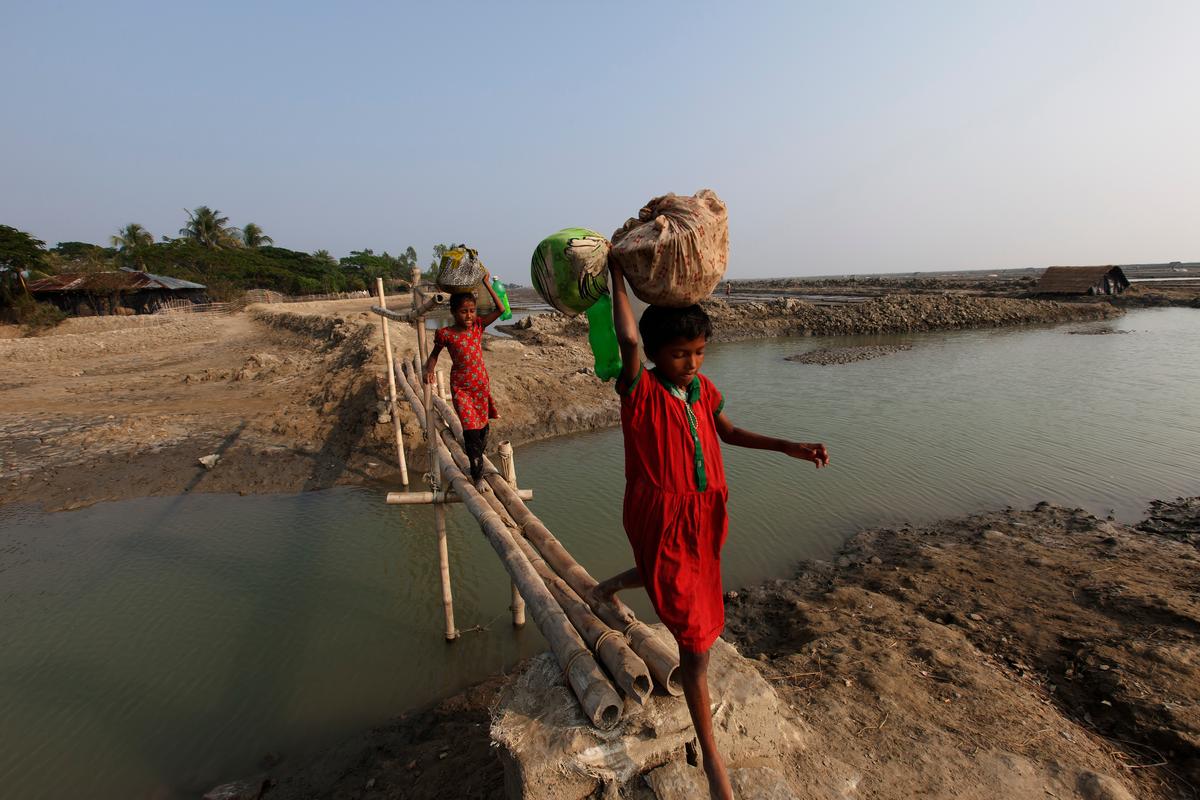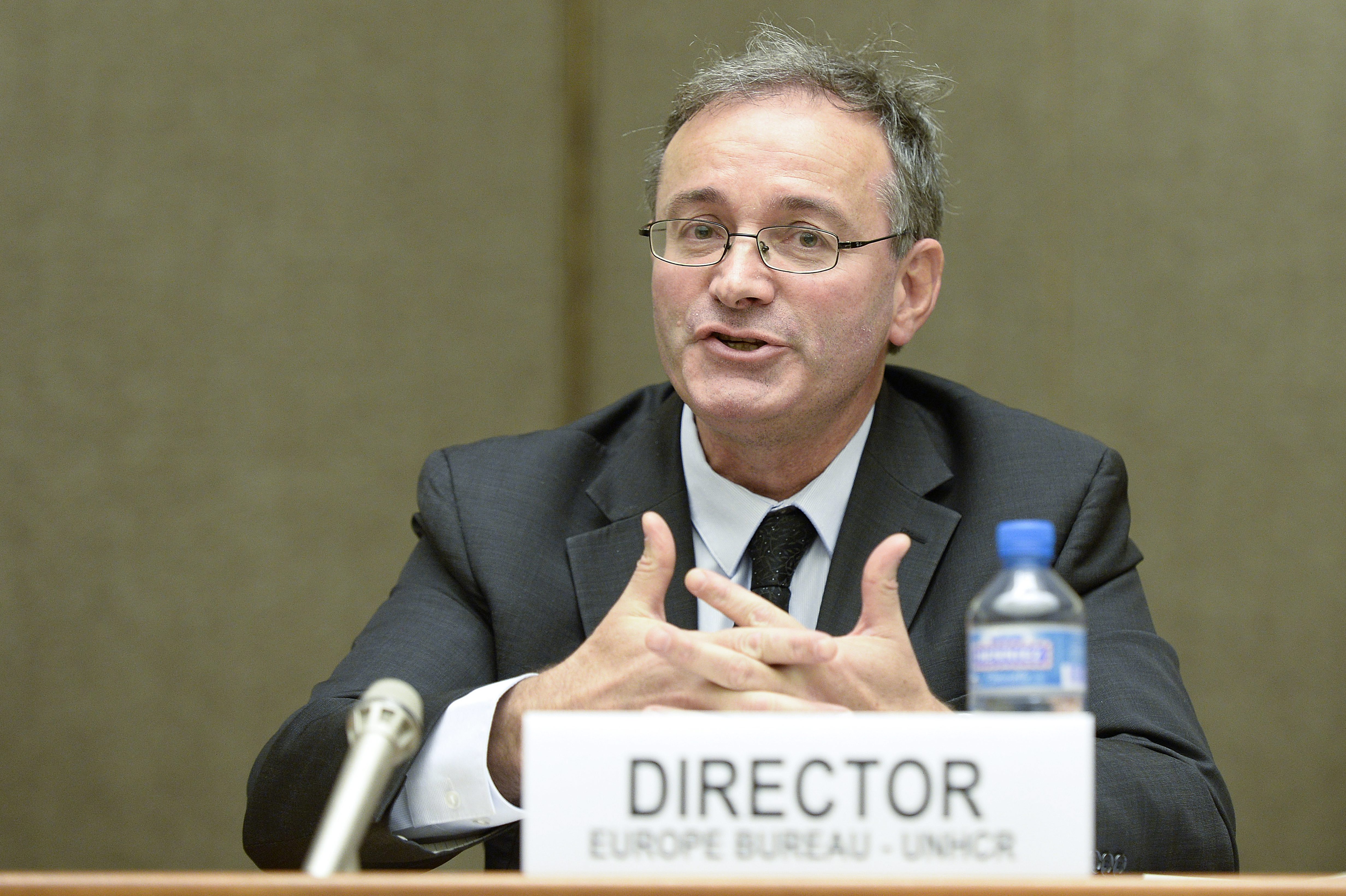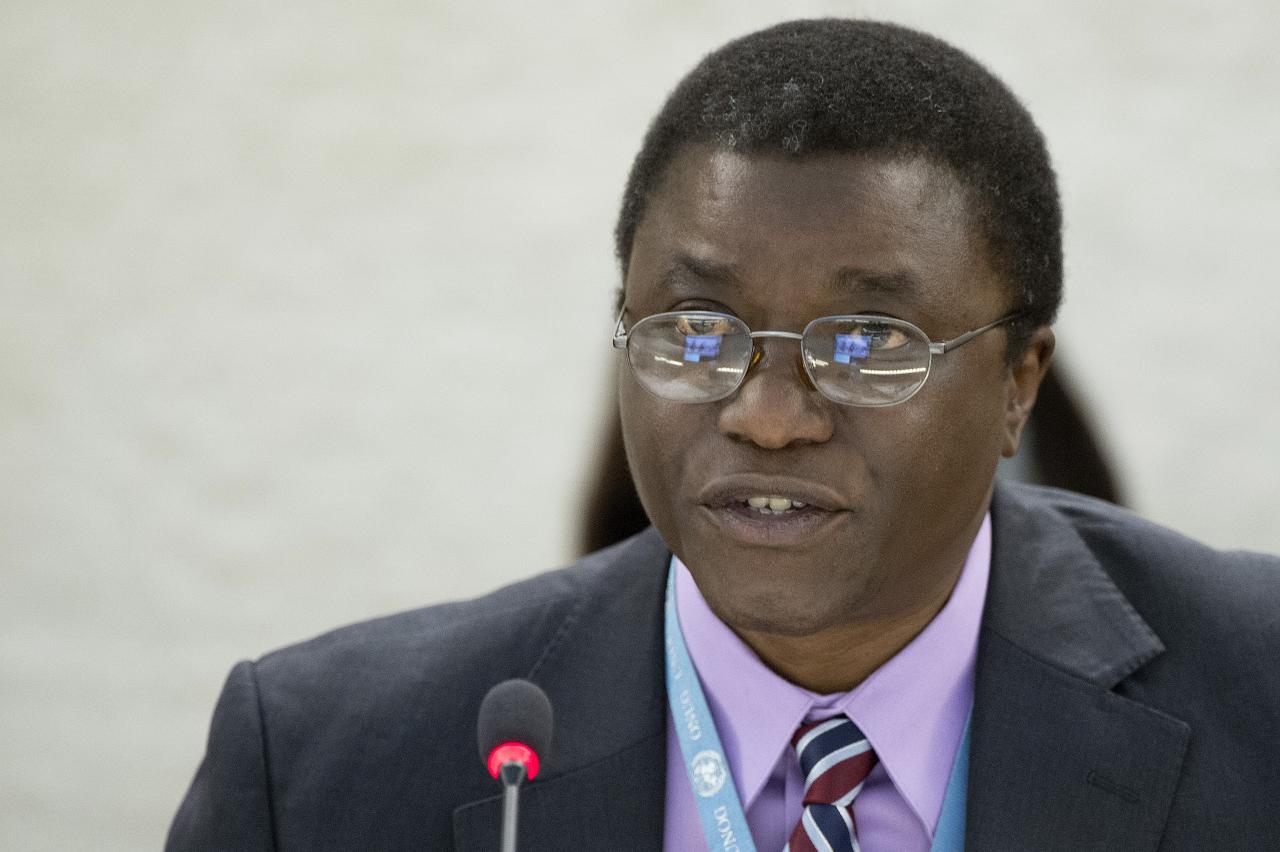Q&A: Future remains bleak for Democratic Republic of the Congo
Q&A: Future remains bleak for Democratic Republic of the Congo

GENEVA, March 8 (UNHCR) - UNHCR's operation in the sprawling Democratic Republic of the Congo (DRC) is one of the biggest and most diverse that it runs in the world. A staff of around 400 people, headed by Regional Representative Stefano Severe, provide protection and aid to hundreds of thousands of people, including refugees, internally displaced Congolese and returnees in rural and urban areas. They are based in Kinshasa or more than a dozen towns in the provinces. The headline story from the DRC has been the waves of fighting between government forces and rebel fighters of the M23 that triggered massive displacement over the past year in the eastern provinces of North Kivu and South Kivu. The two sides began peace talks in December in Uganda, but general lawlessness and fighting between other groups continued to force people from their homes. But during the 18 months that Severe has been in the DRC, tension and displacement has soared in the southern province of Katanga, thousands of people have fled to northern DRC from Central African Republic and the rebel Lord's Resistance Army from Uganda has caused trouble in Province Orientale. There has also been good news, with the repatriation of tens of thousands of Congolese refugees from remote regions of the Republic of Congo as well as the repatriation of Angolan refugees with UNHCR help. The veteran humanitarian Severe, who hails from Switzerland, discussed all this with UNHCR Global Web Editor Leo Dobbs during a recent visit to Geneva. Days after their meeting, the M23 splintered and renewed fighting erupted in North Kivu, leading to more displacement. Excerpts from the interview:
Tell us about the situation in the east of the country
The eastern Congo remains, unfortunately, in a dynamic and volatile situation. There has been a bit of calm since November [when the M23 captured and held the provincial capital of Goma several days before withdrawing and agreeing to join peace talks in Uganda in December] in northern Kivu, but of course a lot of attention has been geared towards the Kampala peace talks. They have not gone very well.
We have seen over the last few weeks some population return in North Kivu, but we have also seen some new displacement. And while the situation in and around Goma, and maybe in the Rutshuru area, has been relatively calm, we have a very dire situation in the Masisi region, where we have seen new conflicts between different groups. There are alliances and counter-alliances and of course it's the civilian population that keeps paying the price. The biggest drawback for us is that we have very little to no access, so it's difficult to really know what condition the people are in. We know they are living in very poor conditions, but it's just very difficult for us to access them.
With the special budget that we have submitted [UNHCR earlier this week launched an appeal for an extra US$70 million for its operations to help the displaced and returnees in the Great Lakes regions. This includes US$22.6 million for the DRC], we will of course address the increased displacement situation in North Kivu. But we want to dedicate about 25 per cent to the more difficult areas like Masisi and try to see whether we can make some impact.
What are we doing now in the east?
We have been working to enhance the capacity of the existing sites for IDPs [internally displaced people], which have grown dramatically over the last few months, particularly Mugunga III [near Goma], where we had to increase the area of housing by about nine acres. We've managed to put in a great number of emergency shelters to try to accommodate all the families that were still housed in hangars, schools and the like. We have managed to bring in substantial amounts of additional shelter material and we will now step up the emergency shelter programme, which aims to eventually help some 47,000 families.
We are also continuing to look with other agencies at how we can improve delivery to all sites. We are looking at formally activating the camp coordination and camp management [CCCM] cluster [led by UNHCR], but we want to avoid making a distinction between spontaneous and older so-called CCCM sites. The aim of introducing the cluster is not to make the IDPs in these sites a privileged group, but rather to recognize that encampment brings specific problems that need to be addressed. The criteria for individual assistance will be one of vulnerability, which is the same that we will apply for host families, who have become increasingly stretched themselves. Therefore particular attention to groupings of people in sites and camps needs to be looked at, not only for North Kivu but also for other provinces where we have had protracted displacement, like Province Orientale, or where there is a crisis in the making, as in Katanga.
How many camps are there in North Kivu and do we have access to them all?
There are 31 camps in North Kivu coordinated by the CCCM [which groups UN and other humanitarian agencies such as the International Organization for Migration] and they provide shelter to about 115,000 people. We can probably access a third of them ourselves. We get news on the others through periodic visits by our implementing partners. Some of the camps have closed, some have reopened. There is an exercise under way to assess the situation in each of these sites as well as the new [spontaneous] ones. There are about 15 new ones, I think.
As the camp coordinator, the CCCM cluster working group lead, we are a convenor and we are trying to ensure that the other clusters do their part . . . There are definitely shortcomings that need to be addressed both in the existing sites and the new ones.
What are the main challenges we face in the eastern provinces?
The main challenge, apart from being able to protect and assist the internally displaced, is accessibility. If we had unhindered access, I think it would be a major step forward and help us to improve our work. Funding is also a challenge. We're happy that we have this supplementary budget.
You mentioned earlier that a new crisis is brewing in Katanga. Can you tell us more?
It's one of those forgotten places. We've had a significant increase in the number of displaced. It went from 65,000 IDPs at the beginning of 2012 to 315,000, according to official OCHA [UN Office for the Coordination of Humanitarian Affairs] figures, which we think are a little on the high side. There is a chronic crisis in and around Kalemie [on Lake Tanganyika] and then we have the "triangle of death," which is Manono, Mitwaba, Pweto. That's where the Mai Mai Gedeon are operating. They have been moving towards Pweto and we have had significant new displacement there. It's an independent group that strives for cessation and the independence of Katanga.
Access is again a problem. Some areas are accessible with huge difficulties from Kalemie, others from Lubumbashi. Again, because of the insecurity we are not able to remain on site. So we have to organize field missions which need a lot of logistical means, which need MONUSCO [the UN peace-keeping force in DRC] involvement and security.
UNHCR's other operations in the DRC tend to get overshadowed by what's happening in the east. Tell us about some of our other important work.
I think our success story at the moment is the return of Congolese refugees from the Republic of Congo [to their homes in northern DRC's Equateur province]. We have crossed the 50,000 mark. It's about halfway. Overall there were about 115,000 to 120,000 people, but of course not all of them will want to return and we have reached our initial planning figure. [UNHCR launched the voluntary repatriation programme across the Oubangui River last May, using boats to repatriate people who had fled inter-ethnic fighting].
There have also been new developments from the Central African Republic [because of fighting between the government and rebel forces there]. We have seen a lot of movement back and forth [across the border] of late. The numbers have increased and we now have access to more than 16,000 refugees in the northern Democratic Republic of the Congo.
It is difficult because they are not all grouped together. We have made one attempt to create a site, but we have seen that the Central African Republic refugees prefer to remain close to their areas of origin. They are scattered along a border that is 800-900 kilometres long - so it is a major challenge. We are preparing a contingency plan because the unfortunate situation in the Central African Republic is not over yet.
Are the Lord's Resistance Army still a problem in the north-east?
If you had asked me this question a few weeks ago I would have said no. But recently they have become more active and created some displacement, ironically from the DRC into the Central African Republic. We also have some displacement between South Sudan and [DRC's] Province Orientale.
And what can you tell us about the persistent problem of sexual violence in DRC?
It's one of the most serious and complex issues we are dealing with. During the recent attacks [last November] major abuses were committed again and, unfortunately, by all parties. There are open investigations now, particularly on what happened in Minova in South Kivu province. [Dozens of women were raped in the town during the fighting late last year]. Of course we have our mechanisms for monitoring and reporting. Our main challenge is how to deal with the victims and how to bring cases to justice. I would say this is our failure. We can identify victims and basically determine how many cases there have been and who has perpetrated them, but when it comes to bringing these cases to justice they have been by and large ignored. There are some programmes that help victims of sexual-based violence, but they are far too few.
What should the international community be doing?
There needs to be a constant effort by the international community to keep the focus on this crisis, and not only on the east. When you look at basic denominators - health, nutrition - we see that the situation in the east is actually slightly better than in other parts of the country. We need to look at the DRC as a whole . . . In the DRC, we are trying as a country team to remind ourselves that there are other areas that need equal attention.
What about the future?
The future, unfortunately, will be more of the same.









